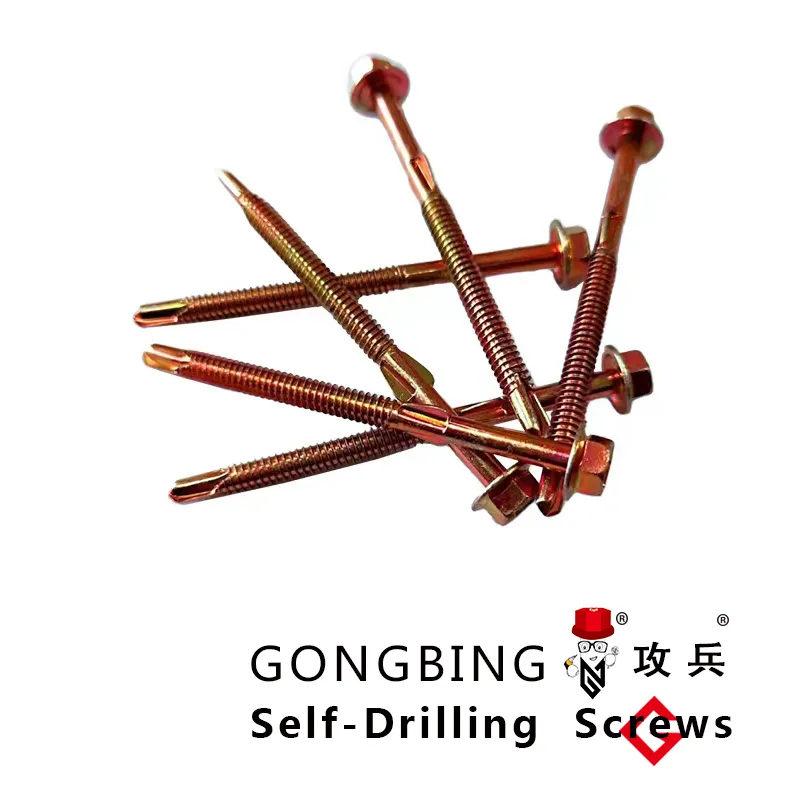chipboard floor screws
Tek screws, commonly known as self-drilling screws, have revolutionized the way industries approach the task of securing metal and wood components together. The diversity of tek screws available allows for a vast range of applications, each suited for specific needs. A keen understanding of the types and uses of tek screws can significantly enhance the efficiency and longevity of any construction or manufacturing project.

The most prevalent types of tek screws include roofing screws, siding screws, and metal-to-metal screws. Each serves a unique purpose, determined by the materials being joined and the conditions they will face. Roofing screws are designed with a broad washer to provide superior sealing capabilities, crucial for protecting structures against weather elements. These screws often feature a neoprene washer, which acts as a buffer to prevent water leakage, thereby prolonging the roof's lifespan and ensuring structural integrity.
Siding screws, on the other hand, are tailored to fasten metal panels to a variety of substrates, including wood and metal frameworks. The threads of siding screws are engineered to provide a secure grip in softer materials, ensuring a secure and aesthetically pleasing finish. Proper selection and use of siding screws are imperative to maintain the visual appeal and structural stability of claddings.

Metal-to-metal tek screws are specifically crafted for joining metal sheets without pre-drilling, thus saving time and labor costs significantly. These are characterized by their point design, typically a 3 tip, capable of penetrating dense metal surfaces effectively. Industries such as automotive manufacturing and shipbuilding frequently utilize metal-to-metal screws due to their reliability in forming durable joins under high-stress conditions.
The coating and material choice for tek screws also play a critical role in their performance. Galvanized and stainless-steel options provide resistance against rust and corrosion, extending the longevity of the joint in harsh environments. For applications exposed to chemicals or saline conditions, stainless steel tek screws are often preferred due to their superior corrosion resistance properties.
types of tek screws
Another important type of tek screw is the composite screw, designed for use with composite materials. These screws feature specialized threads that minimize splitting and provide strong retention in synthetic materials, increasingly popular in modern architectural designs for their sustainability and durability.
When incorporating tek screws into a project, it's essential to take into consideration the load requirements and the environment. High-quality screws that match the specific demands of the tasks provide not only effectiveness but also assurance toward the safety and reliability of the constructed item.
Moreover, the thread diameter and the length of the screws are crucial factors. If the screws’ dimensions are not compatible with the materials, the risk of material damage or joint failure increases. An expert understanding of these variables helps in choosing the optimal screws, ensuring that they serve their purpose without compromise.
Understanding the various types of tek screws and their correct application underscores their critical role in modern construction and manufacturing. As innovations continue to advance material sciences, the adaptability and specificity of tek screws are expected to expand, offering even more tailored solutions that cater to the evolving needs of various industries. A deep knowledge of these fasteners contributes to superior craftsmanship and the creation of enduring structures capable of withstanding the test of time.
-
Weatherproof Plastic Expansion Anchors for OutdoorNovaĵojJun.06,2025
-
Sustainability in the Supply Chain: Eco-Friendly TEK Screws ProductionNovaĵojJun.06,2025
-
Load-Bearing Capacity of External Insulation FixingsNovaĵojJun.06,2025
-
Double Head Bolts: Enhancing Efficiency in Industrial MachineryNovaĵojJun.06,2025
-
Corrosion Resistance in Chipboard Screws: Coatings for Wholesale DurabilityNovaĵojJun.06,2025
-
Butterfly Toggle Bolts : Enhancing Structural ResilienceNovaĵojJun.06,2025
